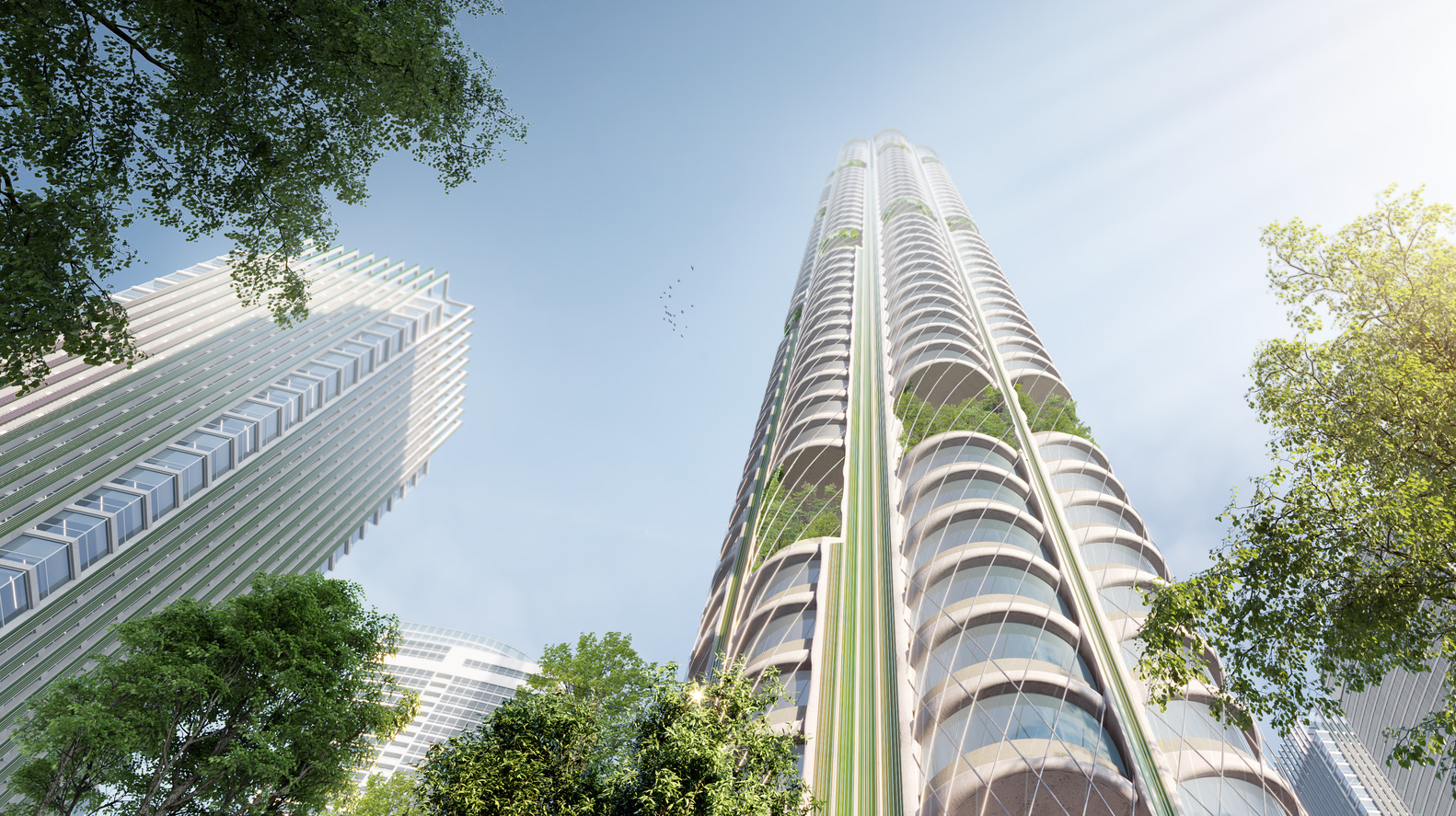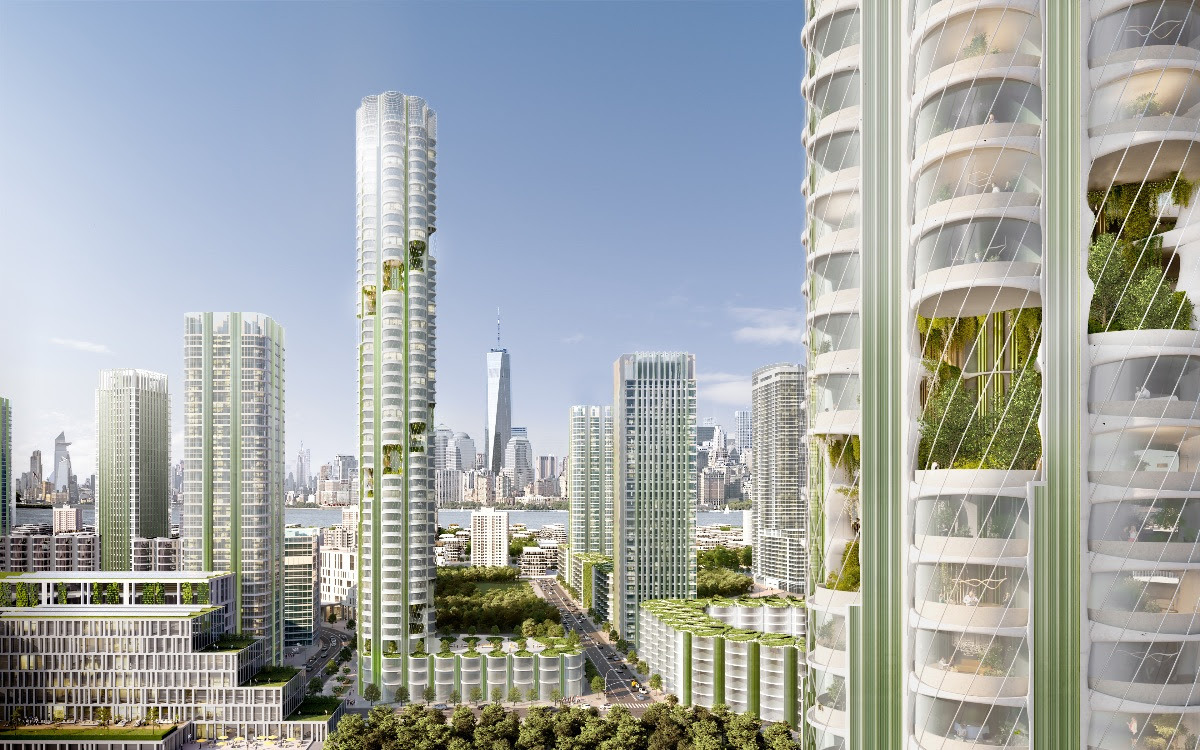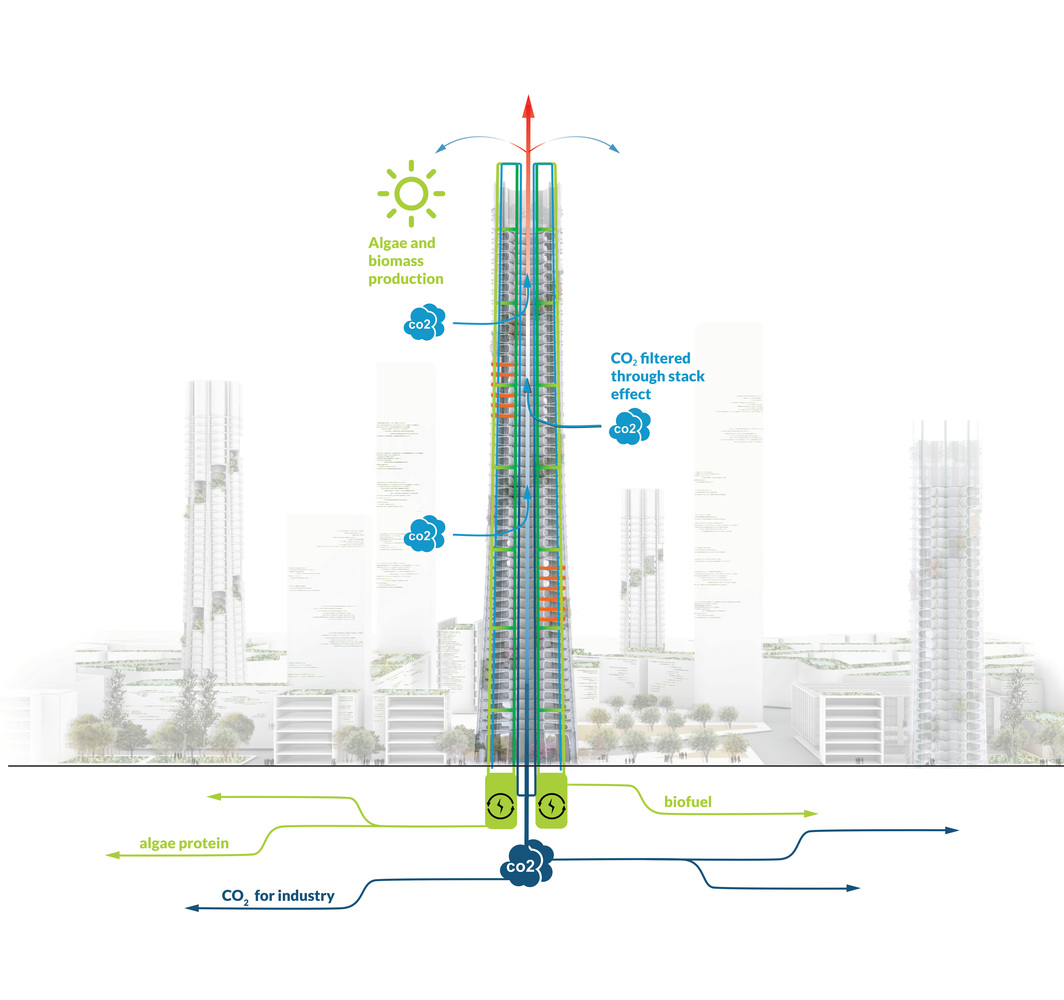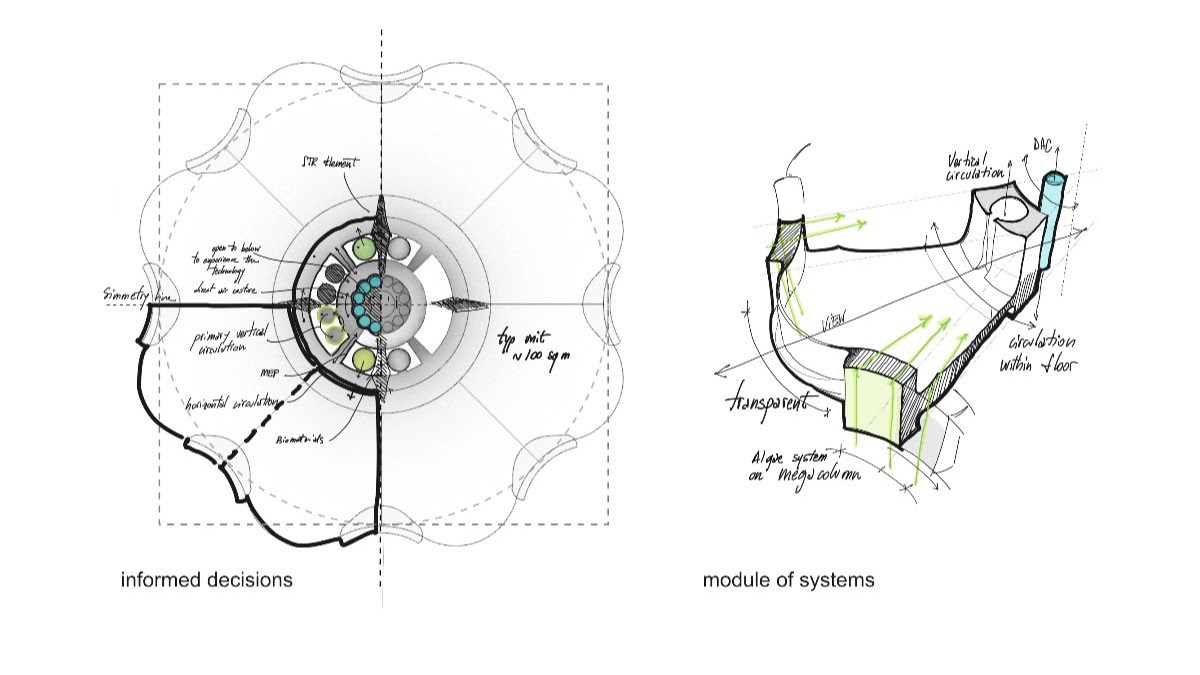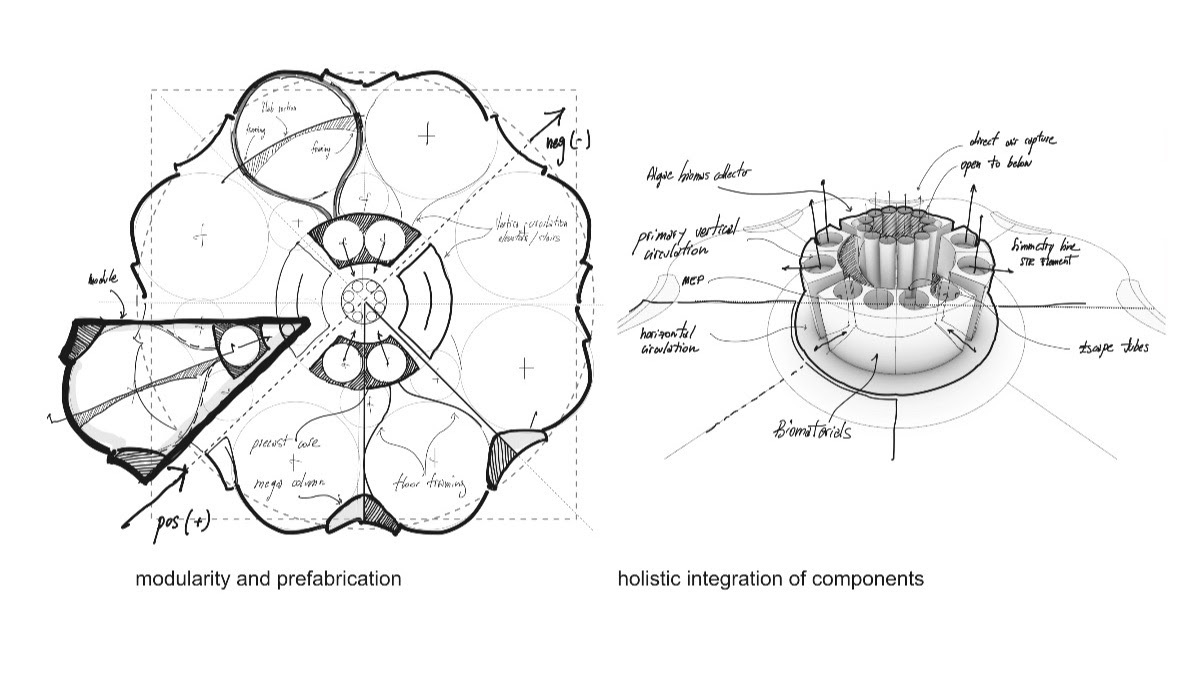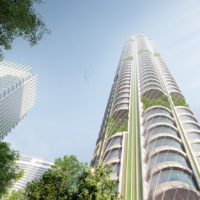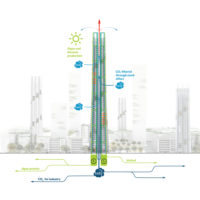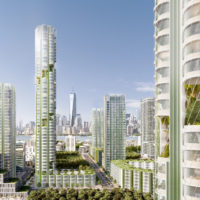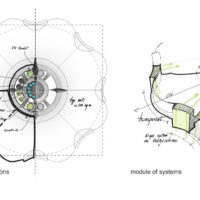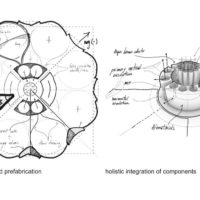At COP26, the 2021 UN Climate Change Conference in Glasgow, Skidmore, Owings & Merrill (SOM) revealed its proposal for a prototype for high-rise buildings that can “sequester carbon and produce biomaterials to create a new carbon economy and a resilient urban environment”.
“What if the built environment could be a solution to the climate crisis, rather than part of the problem? What if buildings could act like trees—capturing carbon, purifying the air, and regenerating the environment?”
To respond to these questions and the ever-growing climate change crisis, SOM designed “Urban Sequoia”; an architectural concept inspired by the natural processes—Urban Sequoia is set to transform the built environment from the industry with the most negative impact with 40 percent of all global carbon emissions, not only to a neutral contributor but to an actual solution to climate challenges.
SOM‘s Strategy Explained
Chris Cooper, SOM Partner, explains the strategy: “We are quickly evolving beyond the idea of being carbon neutral. The time has passed to talk about neutrality. Our proposal for Urban Sequoia – and ultimately entire ‘forests’ of Sequoias – makes buildings, and therefore our cities, part of the solution by designing them to sequester carbon, effectively changing the course of climate change.”
SOM utilized sustainable design thinking, innovation, and modern technologies and translated them into an architectural baseline model for future buildings. The model integrated nature-based solutions; including using biomaterials like bio-brick, hempcrete, timber, and biocrete—these materials are expected to setback the construction carbon impact by 50 percent, compared to conventional building materials like concrete and steel.
“If the Urban Sequoia became the baseline for new buildings, we could realign our industry to become the driving force in the fight against climate change, […] We envision a future in which the first Urban Sequoia will inspire the architecture of an entire neighborhood – feeding into the city ecosystem to capture and repurpose carbon to be used locally with surplus distributed more widely.”
—Said Mina Hasman, Senior Associate Principal
Moreover, carbon-capturing technologies will be incorporated into SOM’s Urban Sequoia—these technologies’ efficiency will actually increase over time. Once built, they will be able to capture up to 1,000 tons of carbon per year, while after 60 years, it is expected that Urban Sequoias will absorb up to 400 percent more carbon than it could have emitted during the construction phase.
“This is a pathway to a more sustainable future that is accessible today. Imagine a world where a building helps to heal the planet, […] We developed our idea so that it could be applied and adapted to meet the needs of any city in the world, with the potential for positive impact at any building scale,”
—Said Kent Jackson, SOM Partner
SOM believes the captured carbon and biomass can, as well, be repurposed to produce biomaterials for roads, pavement, and pipes. The team explains that “by converting urban hardscapes into gardens, designing intense carbon-absorbing landscapes, and retrofitting streets with additional carbon-capturing technology, former grey infrastructure can sequester up to 120 tons of carbon per square kilometer. When replicating these strategies in parks and other green spaces, we can save up to 300 tons per square kilometer of carbon annually”.
“The power of this idea is how achievable it is. Our proposal brings together new design ideas with nature-based solutions, emerging and current carbon absorption technologies and integrates them in ways not done before in the built environment,”
—Said Yasemin Kologlu, Principal at SOM
More from COP26
COP 26, the 26th annual Conference of the Parties, is an international United Nations summit where more than 190 attendees collaborate to face the challenges of climate change. This year, 2021, the UK is hosting the conference and it aims to elevate the crises as much as possible to stay within the 1.5-degree global warming threshold through enormous reductions of greenhouse gas emissions and transitioning to a low carbon economy.
- Courtesy of SOM
- Courtesy of SOM
- Courtesy of SOM
- Courtesy of SOM
- Courtesy of SOM


